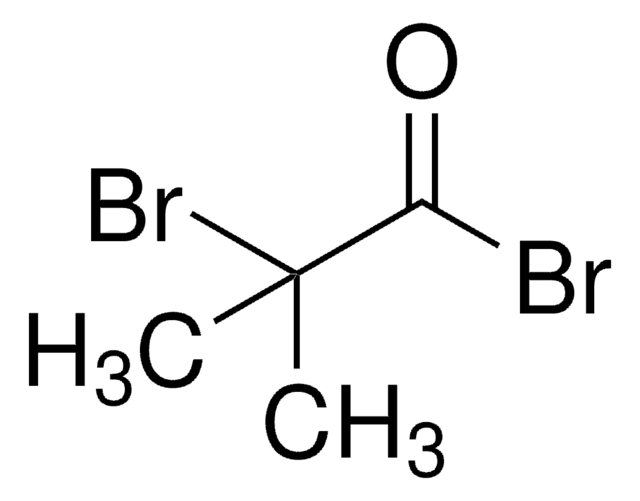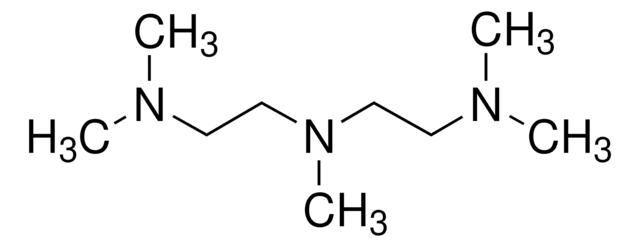327182
tert-Butyl acrylate
contains 10-20 ppm monomethyl ether hydroquinone as inhibitor, 98%
Synonym(s):
t-Butyl acrylate
About This Item
Recommended Products
Quality Level
assay
98%
form
liquid
contains
10-20 ppm monomethyl ether hydroquinone as inhibitor
refractive index
n20/D 1.410 (lit.)
bp
61-63 °C/60 mmHg (lit.)
density
0.875 g/mL at 25 °C (lit.)
SMILES string
CC(C)(C)OC(=O)C=C
InChI
1S/C7H12O2/c1-5-6(8)9-7(2,3)4/h5H,1H2,2-4H3
InChI key
ISXSCDLOGDJUNJ-UHFFFAOYSA-N
Looking for similar products? Visit Product Comparison Guide
General description
Application
tert-Butyl acrylate can also be used as:
- A building block in the synthesis of asymmetric membranes, which are potentially useful in filtration, separation, or gas permeation processes.
- A monomer in the preparation of a siloxane-incorporated copolymer binder for silicon anodes in lithium-ion batteries.
- A monomer in the synthesis of poly(tert-butyl acrylate)/carbon nanofiber (CNF) materials through atom transfer radical polymerization (ATRP).
signalword
Danger
Hazard Classifications
Acute Tox. 3 Inhalation - Acute Tox. 4 Dermal - Acute Tox. 4 Oral - Aquatic Chronic 2 - Flam. Liq. 2 - Skin Irrit. 2 - Skin Sens. 1 - STOT SE 3
target_organs
Respiratory system
Storage Class
3 - Flammable liquids
wgk_germany
WGK 2
flash_point_f
62.6 °F - closed cup
flash_point_c
17 °C - closed cup
ppe
Eyeshields, Faceshields, Gloves, type ABEK (EN14387) respirator filter
Choose from one of the most recent versions:
Already Own This Product?
Find documentation for the products that you have recently purchased in the Document Library.
Customers Also Viewed
Articles
Block copolymer synthesis using a commercially available nitroxide-mediated radical polymerization (NMP) initiator
Our team of scientists has experience in all areas of research including Life Science, Material Science, Chemical Synthesis, Chromatography, Analytical and many others.
Contact Technical Service














![Tris[2-(dimethylamino)ethyl]amine 97%](/deepweb/assets/sigmaaldrich/product/structures/695/792/ee0ff167-22a3-43a7-83a1-6c4908adf0ae/640/ee0ff167-22a3-43a7-83a1-6c4908adf0ae.png)
